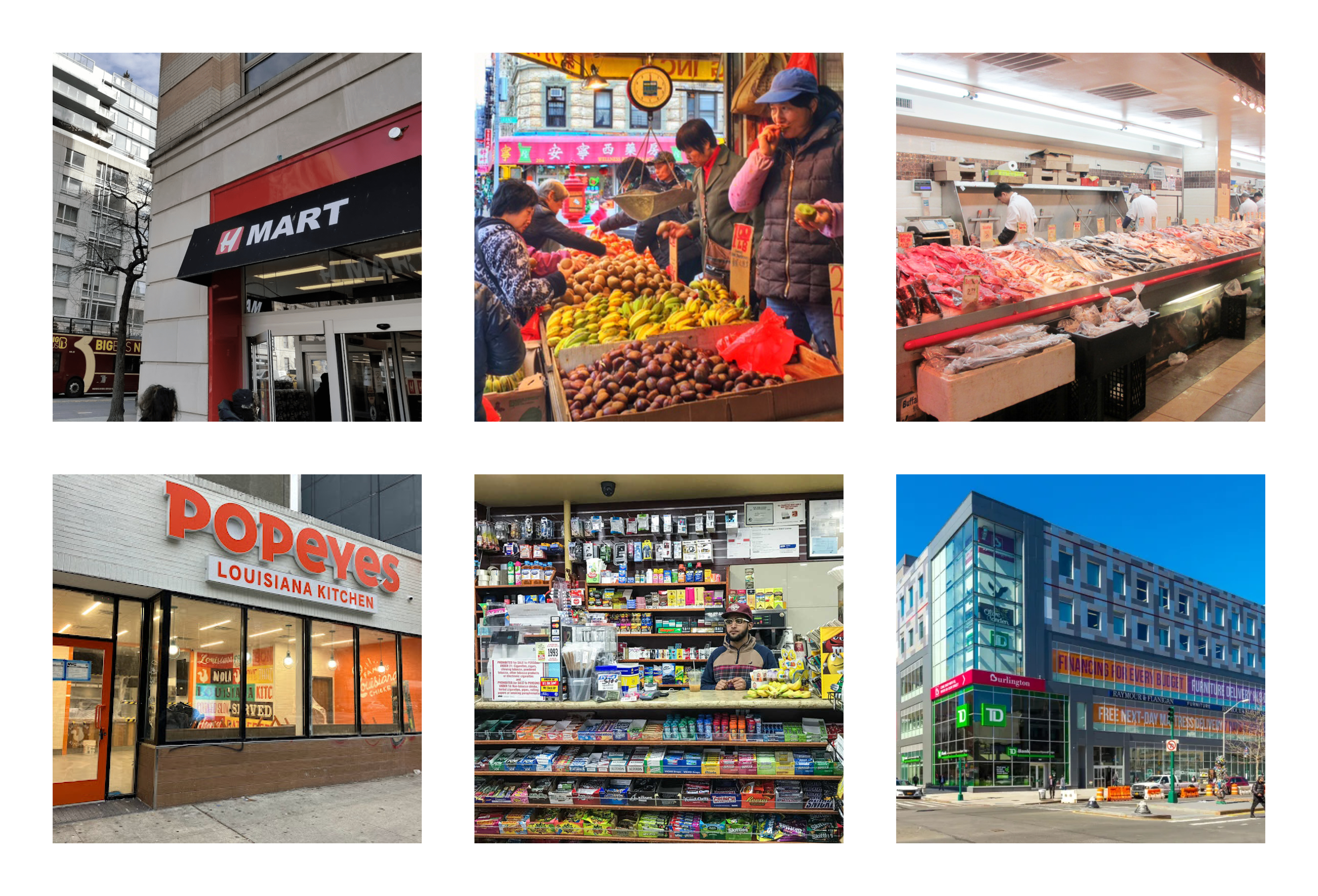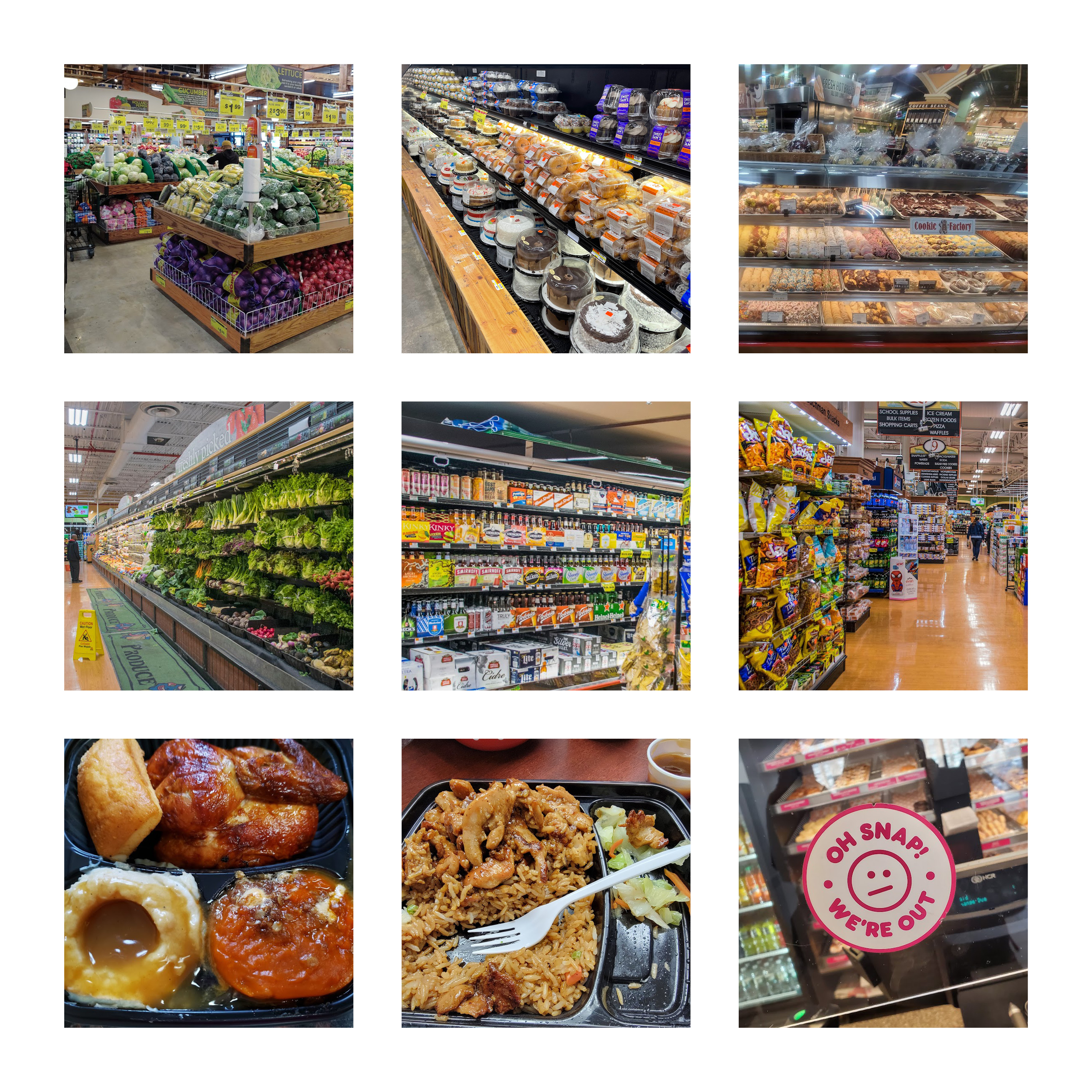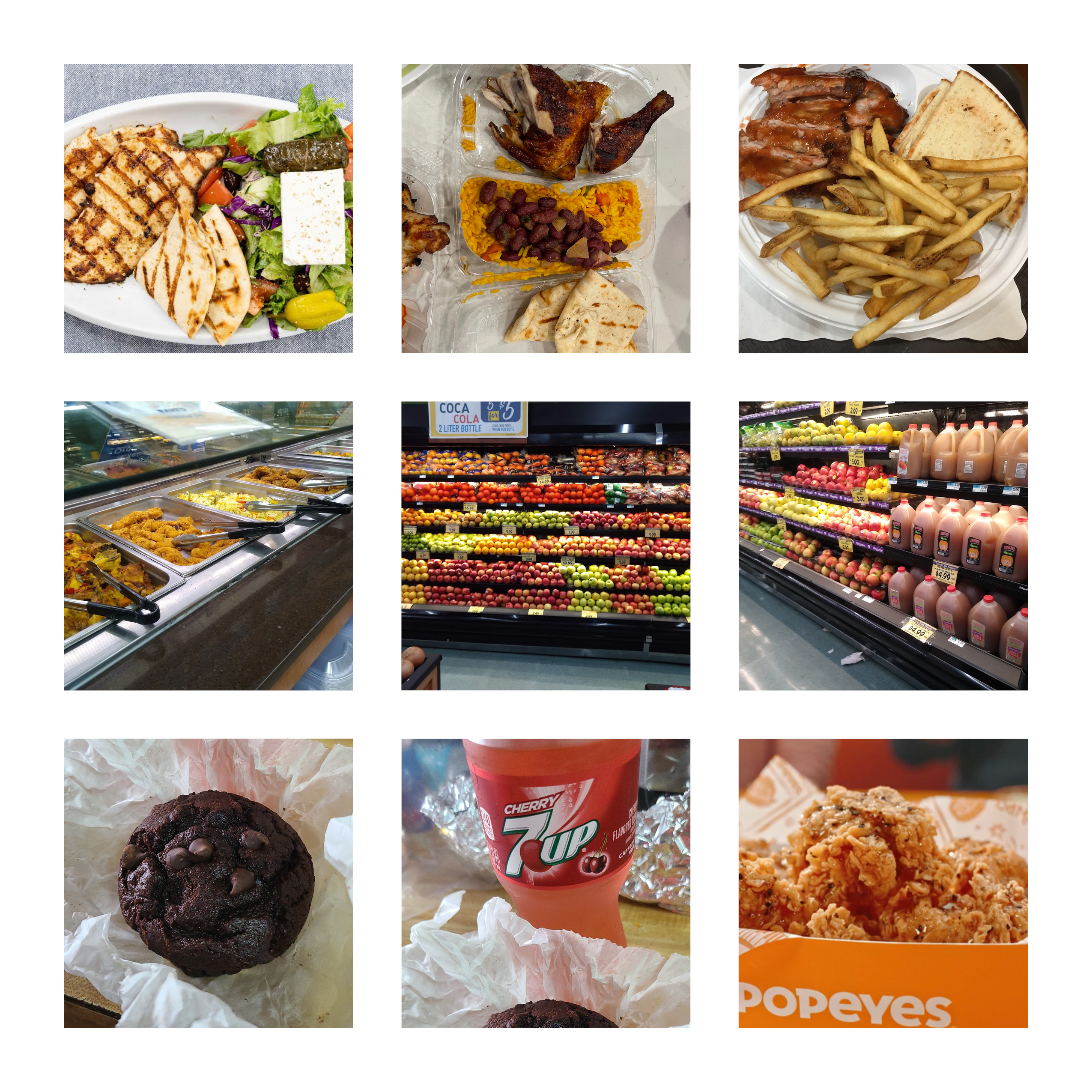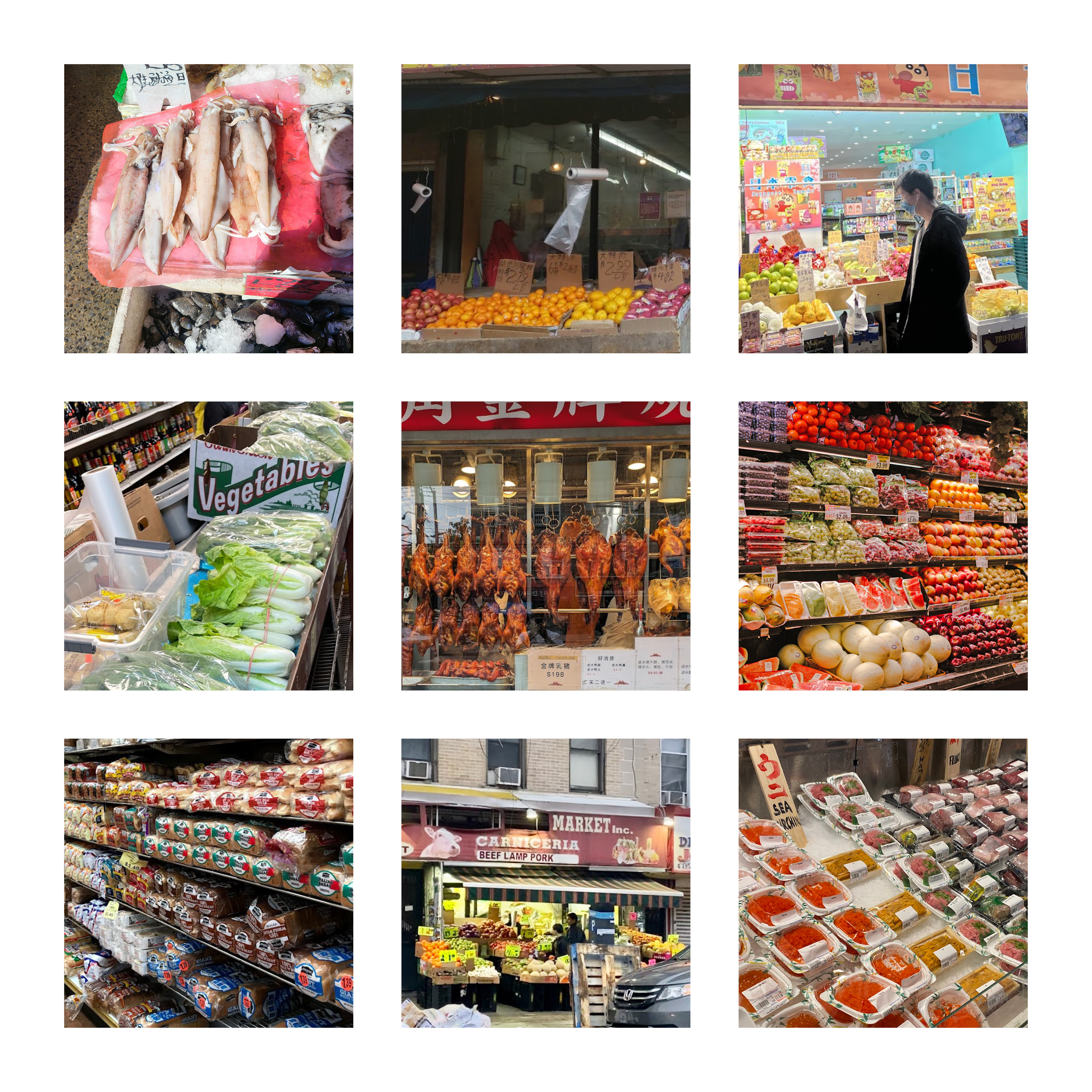01: WHAT IS FOOD INSECURITY
Food insecurity is the inability to comfortably
access affordable, healthy dietary options.
In the context of New York City, it takes two forms:
proximity to healthy food options and also
cannot afford it
physical proximity to healthy food options,
but populace has difficulty affording it
On the contrary, there's also:
proximity to healthy food options and where populace
can afford it
In incumbent investigations by the USDA, food insecurity
is mostly emphasized by the lack of physical proximity
(10 mile radius) to a supermarket. However, since NYC
is so dense, the term "food swamp" must be used to discuss the
lack of economical access to healthier options. In order
to truly discuss which neighborhoods are riddled with
food insecurity, various investigations and correlations
of data such as income, supermarket and bodega counts,
median rent and vehicle counts are all correlated to
paint NYC's food insecurity landscape.
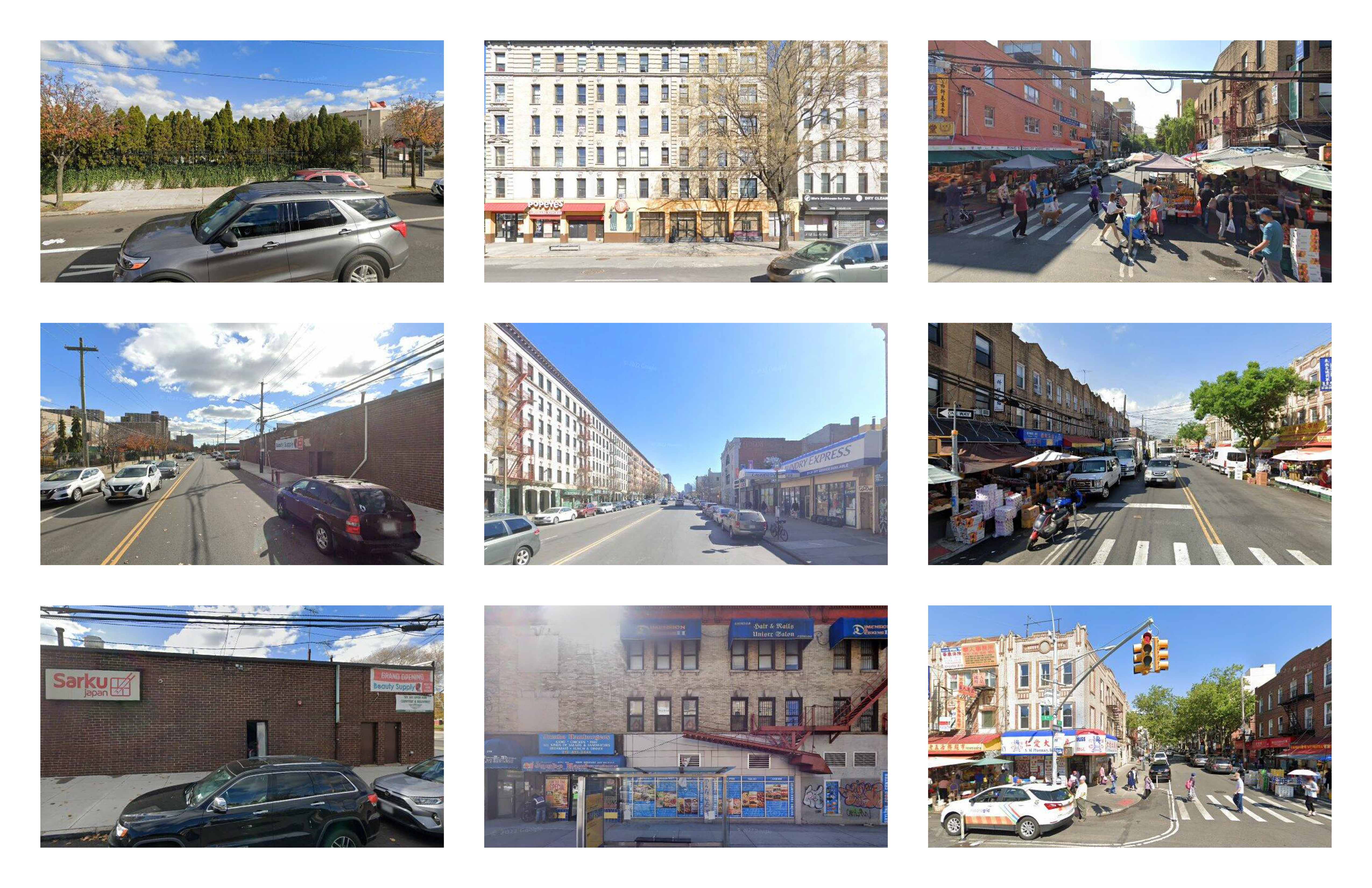
Matrix of street views showing a food desert (left), swamp (center) and oasis (right).
Though this will be looked into further, this gives an idea of infrastructural differences
between the three environments.
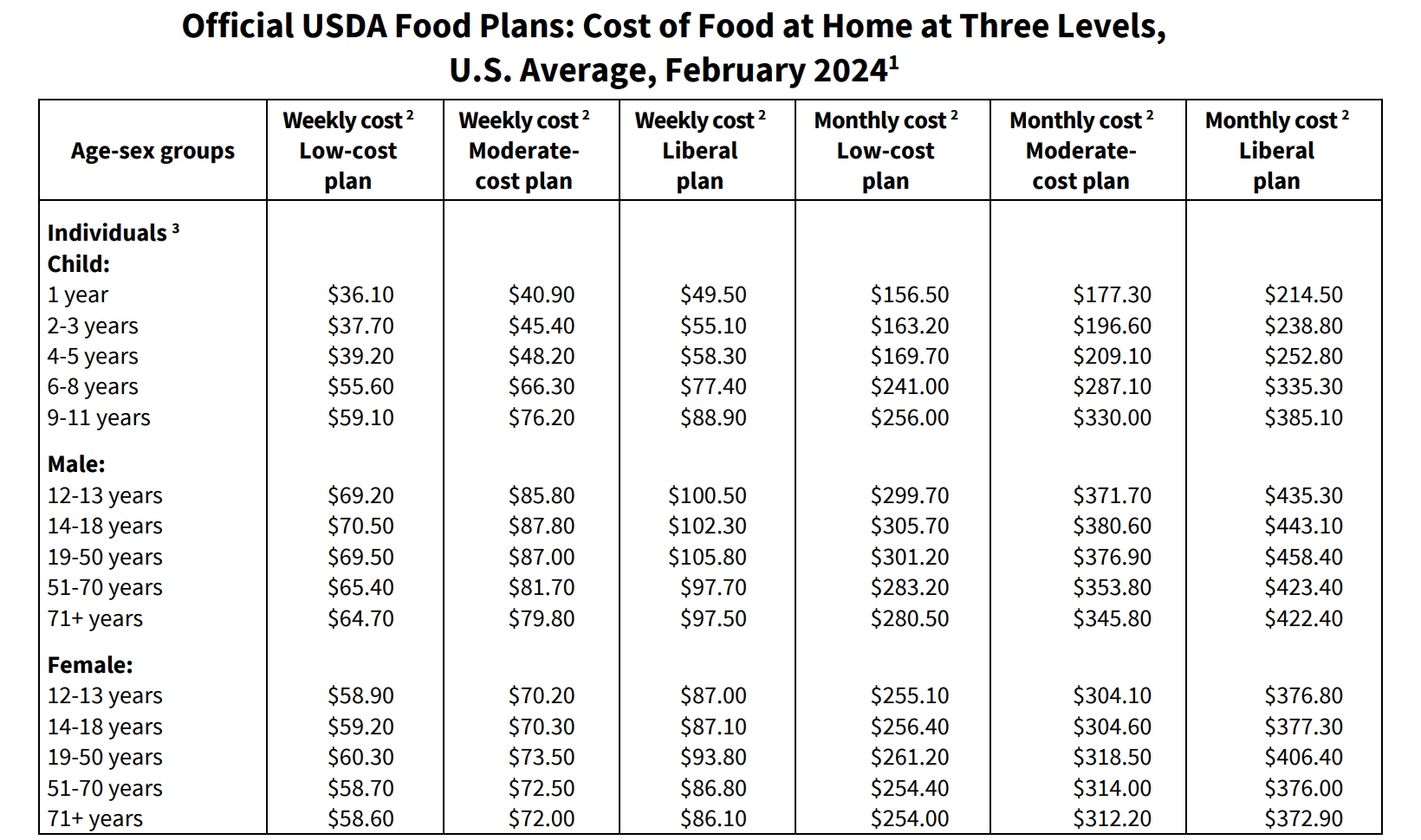
USDA Table showing recommended costs for healthy, nutritious meals per person.
